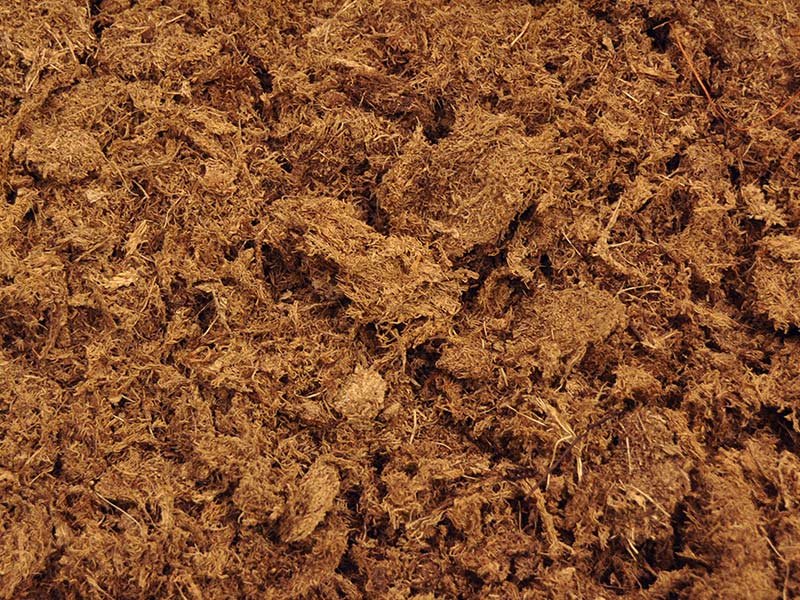Peat moss is an inanimate fibrous material that is formed by the decomposition of some living organisms in peat bogs. Peat moss is formed and develops over decades in less than one millimeter per year. As this process is very slow, peat is not considered a renewable resource.
Peat moss has been a commonly used garden material since the middle of the last century and has been called plant material since then. It has an extraordinary ability to effectively control water consumption and preserve nutrients. Peat moss has many advantages, is economical, and improves water and nutrient absorption and soil quality. However, peat moss also has some disadvantages, which explains the need to find an alternative to peat moss.
Worm Castings
Castings are the waste products of cultivated earthworms. The castings contain enzymes and minerals that provide plants with readily available nutrients. Like peat mosses, they improve water retention, aerate the soil, and inhibit fungal damage.
When earthworm watering decomposes, they serve as a long-term fertilizer. But unlike chemical fertilizers, there is no danger of burning the plants. Since they are pH neutral, they have no influence on the pH value of the soil.
Biochar
Biochar is a product obtained by heating organic matter at high temperatures (300-500°C) without oxygen. The result is a very stable form of carbon. Biochar has been tested as an additive for agricultural soil with conflicting results. For this reason and for regulatory reasons, commercial biogas is not easily available. Although other tests are positive, it is unlikely to play a significant role as an environmental additive.
Coconut Coir
The coconut fiber was a popular garden product in the 19th century, but it was abandoned in favor of peat moss. At that time, the coir of inferior quality was being rapidly degraded, which hindered short-term cultivation. Recent advances in production made it possible to make stronger products. As a result, coco fiber is rapidly gaining popularity as one of the best alternatives to peat moss.
The coco coir consists of brown and white fibers between the shell and the outer shell of the coconut. The coconut shells are first soaked with water to make them soft. After softening, the fibers are removed from the shell and dried.
Food By-products
Food by-products are remnants of materials from various ingredients. They come from various ingredients such as coco peat, peanuts, corn, cotton seeds, or rice. They make idea crushed cotton, rice husks, or peanuts and can be used as an alternative to peat moss.
Rice Hulls
Rice hulls, for example, are thin shells of rice grains that are extracted during the hulling process. They are used alone or in addition to mixtures to clean the soil. They help evacuate excess water while ensuring adequate retention. They are also available at the local market. For good results, mix the rice bowl with the pressed coconut.
Wood Products
Wood-based materials such as sawdust, wood fibers, or composite bark are not an ideal alternative to peat moss, but they do have some advantages, especially if they are made from locally produced wood by-products.
The pH value of wood products is generally low, which makes the soil more acidic. This can be useful for acid-loving plants such as rhododendrons and azaleas, but not for plants that prefer a more alkaline environment. The pH value can be easily determined and adjusted with a pH test kit.
It should be noted that some wood products are not by-products, but are obtained from certain trees for horticulture, which is not beneficial for the environment. Some wood products can be chemically treated.
Compost
The compost, a good substitute for peat moss, is rich in microorganisms that are beneficial to the soil in many ways. Compost, sometimes called “black gold”, also improves drainage, attracts worms, and provides nutritional value.
There are no major disadvantages to using compost as a substitute for peat moss, but it is important to replenish the compost regularly as it becomes compacted and loses its nutritional value.
Garden Waste
Why waste such as dark from old trees garden, branches, or pine needle leaves, etc. when they can be a good substitute for peat moss? The best thing about this alternative is that you can do it at home. Just shed over the leaves by using a lawnmower. By crushing the leaves into pieces, they can decompose into humus more quickly.
Pine Needles
Pine needle mulch also helps to change the soil by nourishing it with the beneficial acids that nourish flowering plants such as rhododendrons, lilies, and marigolds.
Final Thought
When buying a substitute, make sure they are organic and chemical-free. This promotes healthy, living soil and a lush green garden.

